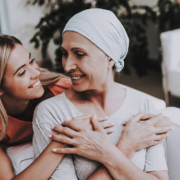Osteoarthritis is a condition that affects millions of people around Europe, especially older individuals and is the most common form of arthritis. Once seen as a consequence of wear and tear, it is now understood to be a disease that can affect any joint.
It is not a disease with one sole cause, but a combination of several factors. Some of these relate to lifestyle, but others do not. These include:
- Genetic predisposition, as the condition can be heredatory
- Gender, with women more susceptible
- Existing musculoskeletal disorders
Are Osteoarthritis Cases Increasing?
According to the Global Burden of Disease Study, in 2020, there were 595 million osteoarthritis sufferers worldwide, equating to 7.6 per cent of the global population.
As the number of people living longer increases, cases are projected to increase significantly by 2050, with osteoarthritis of the knee, the most common form of the disease, set to increase by 74.9 per cent.
Age is not the only factor in the growing prevalence of osteoarthritis, with a high BMI contributing in a fifth of cases, indicating that more sedentary lifestyles in affluent parts of the world, such as Europe, have made the problem worse. In Central Europe, prevalence was up 57.3 per cent in 2020 compared with 1990.
The growing frequency with which people are suffering from osteoarthritis has motivated the research and development of new and enhanced methods of treating the condition. While many of these involve taking medication of various types, radiotherapy can also be effective.
How Does Radiation Treatment Reduce Pain And Inflammation?
This may come as a surprise to many, who would regard radiotherapy as something used against cancer, with those having some knowledge of its mechanisms understanding that the radiation delivered by such treatment is used to damage the DNA of tumour cells, causing cell death and the shrinkage of tumours.
Although this is indeed how radiotherapy works against tumours, it can bring different benefits when used to treat osteoarthritis.
The kind of radiotherapy given is low-dosage external radiation therapy, using beams that can pass through the skin into the affected joint (such as the knee or shoulder).
It works by using the same mechanism as radiotherapy used to treat cancer cells by triggering cell death. In this instance, the radiation causes apoptosis (controlled cell death) in inflammatory cells, which has the effect of reducing the capacity of the immune system to respond to the disease by generating inflammation.
How Does Radiotherapy Affect Cytokines?
Similarly, it also suppresses pro-inflammatory cytokines, which are proteins with the specific task of triggering and directing immune responses.
Some may be familiar with the term ‘cytokine storm’, where too many cytokines can lead to excessive inflammation and an overactive immune system. This is a common problem in autoimmune conditions.
In this case, the pro-inflammatory cytokine response to osteoarthritis is not excessive, but it does result in inflammation and chronic pain, which is why suppressing it is beneficial.
Moreover, the benefits extend further as the reduction in pro-inflammatory cytokines is accompanied by an increase in anti-inflammatory cytokines, effectively reversing the normal immune response and reducing inflammation as a result.
What research has indicated is that low-dosage radiotherapy has had a beneficial effect for many patients in relieving the chronic pain of osteoarthritis. A particularly valuable benefit is that this has often been the case for patients who have not gained substantial relief from other treatments, such as physiotherapy or drugs.
As well as reducing pain, the benefits include greater mobility, which combine to provide the patient with a greater quality of life.
What Are The Side Effects Of Low-Dose Radiotherapy?
Radiotherapy is widely understood to bring side-effects for patients, and in the case of those facing very serious conditions such as cancer, this is a fact of life, with symptoms such as hair loss, skin soreness, tiredness, lack of libido and gastrointestinal issues all being commonly experienced during treatment.
However, because the dosage of radiation is significantly lower when it is being used to treat osteoarthritis, the side effects in this case are fewer and the treatment is usually safe. Among the side effects that commonly occur are nail problems and mild erythema.
The extent to which pain relief is experienced can vary and, as with any treatment, a central feature of our approach is to tailor it to your personal circumstances.
Wider health issues, age, weight, genetics, the presence of musculoskeletal issues and other factors will not only determine the likelihood of suffering osteoarthritis, but also the effectiveness of treatment and the approach that will need to be taken to provide the best possible results in each patient’s case.
Nonetheless, it remains the case that low-dosage radiation therapy is an effective tool in providing relief from osteoarthritis symptoms and may be used with increasing frequency in the years ahead, should projected increases in incidences of the disease prove accurate and no major breakthrough in other forms of treatment is forthcoming.











